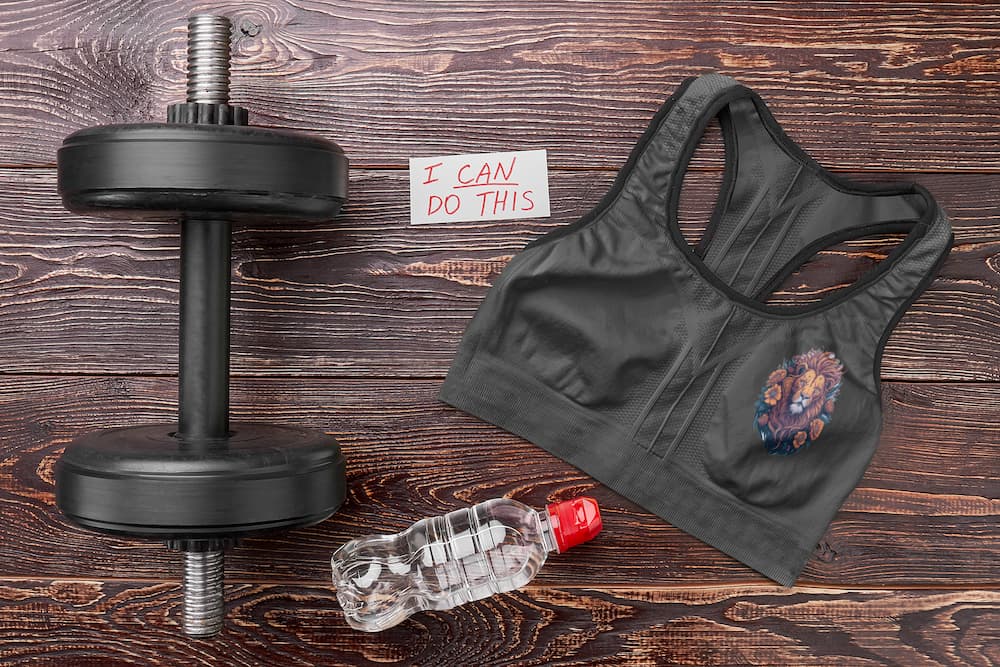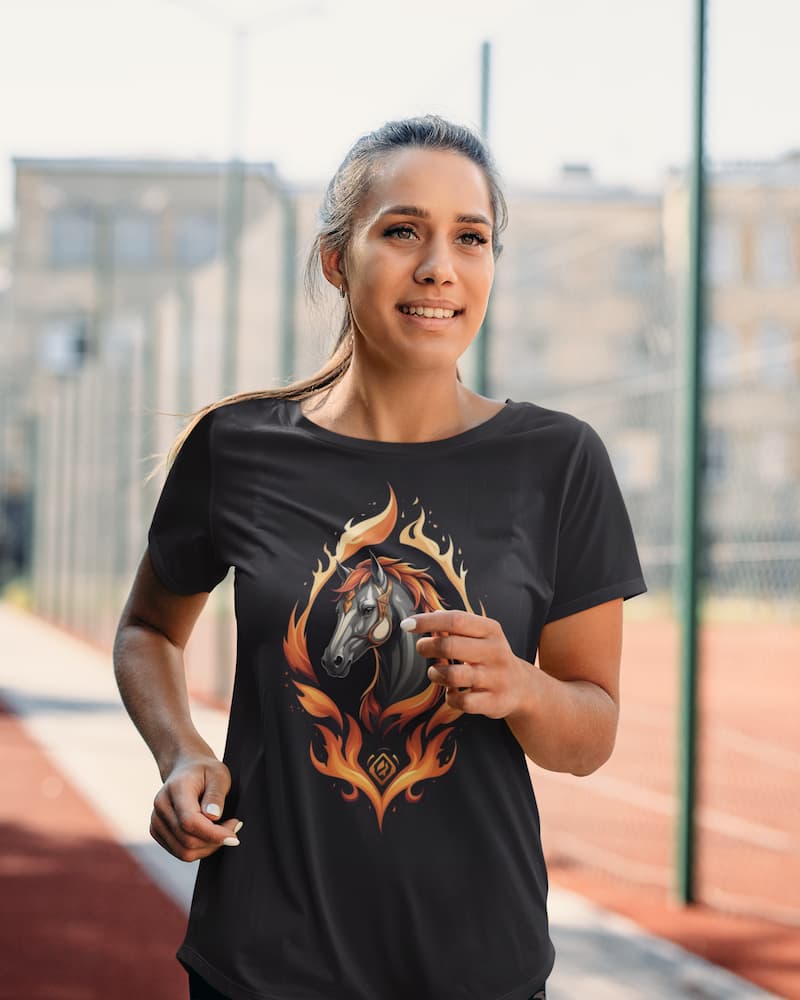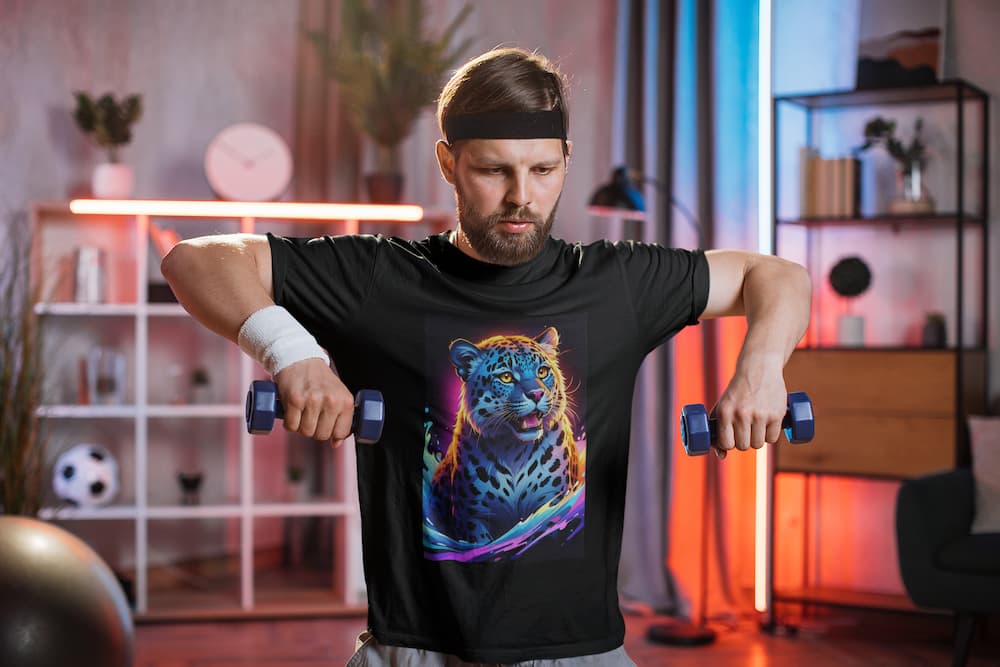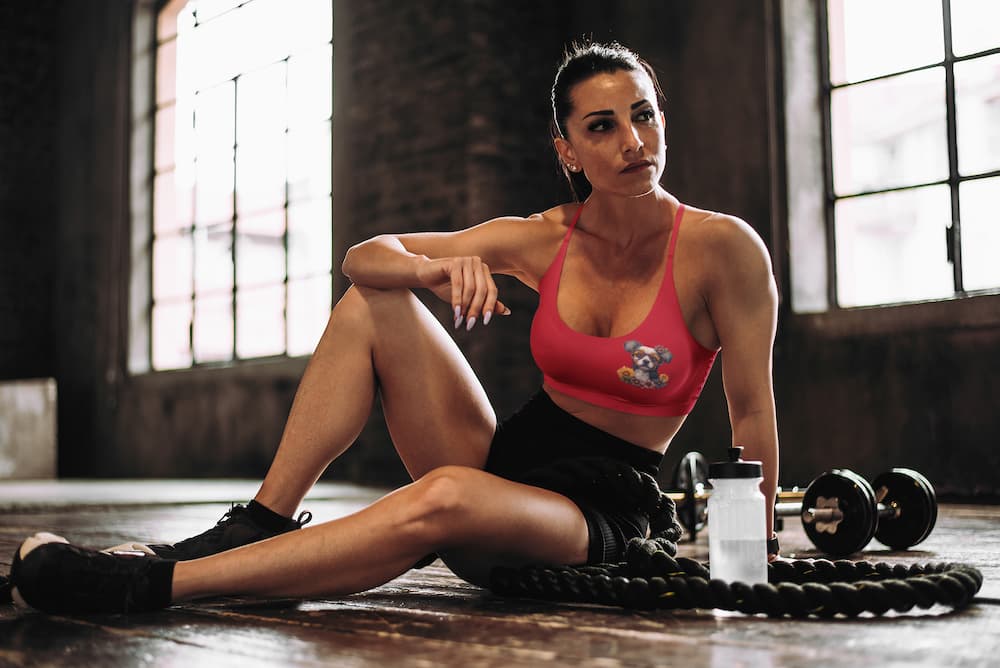All Posts, Direct To Film, Helpful Info
Revolutionise T-Shirt Printing with Polyester DTF Transfers
Recently updated on February 23rd, 2024 at 06:23 am
Printing on polyester has always been a bit of a headache. But, the game is about to change with new DTF transfers becoming available. Gone are the days of struggling with screen printing and its additives or wrestling with DTG’s limitations.
This guide throws you right into how DTF transfers are revolutionising polyester T-shirt printing. Dive into the nitty-gritty of their technological leaps, explore how the new Low-Temperature Adhesive is flipping the script. Also snag some savvy advice for perfect prints every time on polyester T Shirts and apparel.
Delving into DTF Transfers Australia’s pioneering strides, we are happy to unveil the uniqueness of DTF in transforming printing practices. Whether you run a small print shop or enjoy this as a hobby, we’ve got something for everyone looking to step up their printing game.
Table Of Contents:
- The Evolution of T-Shirt Printing Technologies
- Why DTF Transfers Are Revolutionising Polyester Printing
- Comprehensive Guide to Using DTF Transfers on Polyester
- DTF Transfers Australia
- Practical Tips for Print Shops and Hobbyists
- Conclusion
The Evolution of T-Shirt Printing Technologies
Printing on t-shirts has journeyed through time, evolving with technology to overcome the persistent challenge of printing on polyester. From traditional methods that had their limitations to modern solutions offering precision and efficiency, let’s explore how these technologies have shaped the industry.

From Screen Printing to DTG
In the beginning, there was screen printing. Initially, this technique required the incorporation of specific additives into Plastisol inks for imprinting on polyester materials, a method celebrated for its longevity yet constrained by its intricate nature and the necessity to employ numerous screens for each pattern. Then came Direct to Garment (DTG) printing, which promised a simpler workflow and better quality prints on cotton fabrics. However, when it came to polyester – a fabric beloved for its resilience and moisture-wicking properties – DTG encountered hurdles such as dye migration and colour inaccuracies.
To address these issues with DTG, workarounds were developed, though they often required pre-treatment processes that added extra steps and costs and were far from optimal.
The Rise of HTV Vinyl
As print shops sought more reliable solutions for polyester materials, Heat Transfer Vinyl (HTV) emerged as an alternative option. HTV allowed designers greater flexibility with colours including neon shades not typically achievable through direct ink techniques; however, it too faced challenges especially regarding the feel or ‘hand’ of finished garments which could be stiff or bulky.
This led innovators towards Subli-Blocking vinyls designed specifically to block out sublimated dyes from bleeding through, improving results but still leaving room for improvement in terms of texture and breathability – critical factors in sportswear applications where performance matters just as much as aesthetics do.
Each stage in this evolution reflects efforts made by printers around the globe striving for perfection within their craft while navigating complexities inherent in each type of material used in clothing production today. Polyester, in its impeccable form, continues to reign supreme as the ideal choice because of its adaptability and widespread popularity, underscoring the necessity for continuous exploration into methods that are both efficient and feasible for everyone involved in this field, from big enterprises to enthusiasts.
T-shirt printing has evolved from complex screen printing to DTG and HTV, each with its challenges, especially on polyester. Innovations continue as the quest for perfect prints on versatile polyester drives the industry forward.
Why DTF Transfers Are Revolutionising Polyester Printing
Advancements in DTF Technology
T-shirt printing is undergoing a massive transformation, all due to the swift progress in Direct to Film (DTF) transfers, altering everything we knew about polyester embellishments. Gone are the days when traditional methods left designers frustrated with peeling prints and faded colours on polyester fabrics. Direct-to-Film transfers are transforming the landscape, delivering unmatched sharpness and resilience.

The advancement in technology has ushered in an era where print clarity and operational efficiency have seen remarkable enhancements, transforming the landscape of fabric design. With DTF, intricate details no longer blur or bleed during the transfer process, ensuring that every piece of artwork stands out brilliantly against polyester’s tricky surface. With each passing day, the rapid progression of this technology unfolds new possibilities, easing its use for both commercial enterprises and enthusiasts.
Peering into the progression of DTF print tech, we notice it’s cleverly tackled problems that once plagued alternative printing techniques. It’s not just about better visuals; it’s also about streamlining production processes for faster turnaround times without compromising on quality.
The Benefits of Low-Temperature Adhesive
One key innovation driving the popularity of DTF transfers among polyester enthusiasts is low-temperature adhesive application settings between 100 to 120 degrees Celsius for just 8 to 15 seconds. This breakthrough allows designs to bond securely with fabric fibres without damaging delicate materials or causing unsightly marks from overheating—a common pitfall in previous technologies.
This method proves especially beneficial for polyester fabrics known for their sensitivity to sublimation under high heat which often leads them to colour distortion found when using other methodologies such as HTV Vinyl, Screen printing and DTG Digital Printing, these techniques previously attempted tackle these challenges yet fell short due its inability to fully prevent sublimation dyes bleeding during the heat setting or pressing stages making these less than ideal choice many applications.
Nowadays however this problem seems be a thing past all because innovative approaches taken within realm of digital film transfers (DTF Direct to Film) proving once again adaptability and versatility while unlocking new possibilities in the world of fashion and sportswear. Beyond the simple ability to apply vibrant durable prints onto most types of garments regardless of its composition and temperature sensitivity, opens up whole new avenue of opportunities for those looking to explore creative boundaries without being held back by limitations of outdated equipment and printing techniques.
DTF transfers are changing the game in T-shirt printing by offering sharp, durable designs on polyester. This tech allows for detailed artwork without damage or colour distortion, thanks to low-temperature adhesives. It’s a big win for anyone looking to push creative limits.
Comprehensive Guide to Using DTF Transfers on Polyester
If you’re keen on getting your hands dirty with some cutting-edge T-shirt printing, let’s talk about using Direct to Film (DTF) transfers on polyester. Direct to Film (DTF) transfers are swiftly establishing themselves as the preferred choice for producing vivid and long-lasting designs.

The Evolution of T-Shirt Printing Technologies
We’ve come a long way from the traditional screen printing methods that were once the backbone of custom apparel creation. With additives needed for Plastisol inks or the use of special cold cure inks, it was more art than science when it came to polyester fabrics. Then came along DTG (Direct to Garment) printing which promised much (and worked great with cotton T Shirts and apparel) but still struggled with polyester’s slick surface.
HTV Vinyl stepped up next, armed with Subli-Blocking technology designed specifically for tackling dye migration issues common in polyester materials. But while these methods have had their moments under the sun, they each carried limitations that prevented them from being the ultimate solution.
Why DTF Transfers Are Revolutionising Polyester Printing
The rise of DTF transfers has been nothing short of revolutionary in the world of fabric printing, especially when dealing with tricky substrates like polyester. The secret? A new low-temperature adhesive that works wonders by bonding firmly without ruining delicate fibers – allowing settings between 100 and 120 degrees Celsius for just 8 to 15 seconds of press time.
This technological leap forward means no more guessing games or crossed fingers when pressing designs onto your favorite poly tees; efficiency and quality can finally shake hands thanks to advancements in DTF transfer technology.
Spotlight on DTF Transfers Australia
Australian decorators are leading this charge into uncharted territories with gusto. Australians are pioneers, and the likes of DTF Transfers Australia are not just jumping on a bandwagon; they’re driving in by creating bespoke solutions tailored exclusively for mastering print jobs on all kinds of polyester garments.
DTF transfers are changing the game in T-shirt printing, offering vibrant and durable designs on polyester without the hassle of older methods. With a unique low-temperature adhesive, these transfers make quality prints easy and efficient.
DTF Transfers Australia
DTF Transfers Australia is at the forefront, crafting unique solutions for polyester printing with their innovative transfers. Revolutionising the printing scene, with its effortlessly website, polyester fabric printing has just got a lot easier.

DTF Transfers Australia is releasing transfers specifically designed for polyester printing.
In an industry where precision and quality are non-negotiable, DTF Transfers Australia steps up by offering a product tailored explicitly for the tricky business of polyester printing. In every transfer they craft, their passion illuminates, positioning them as one of Australia’s pioneers of creativity within the world of DTF Transfers.
Our commitment isn’t just about producing quality transfers; it’s also about solving one of the most persistent problems in fabric printing – getting vivid, durable prints on synthetic materials like polyester. For years, this dilemma has been a thorn in the side of printers since conventional techniques usually stumble when confronted with such textiles.
To truly appreciate what DTF Transfers Australia brings to the table, let’s delve into why our specialised approach matters. Polyester fabrics present a notorious challenge due to their resistance to ink absorption and tendency towards dye migration(dye sublimation) during the heating processes used in traditional screen printing or DTG (Direct To Garment) printing techniques to cure the print. The brilliance behind DTF Transfer technology, however, lies within its capacity not only to circumvent these issues but also offer vibrant colors that stay true even after multiple washes – all thanks to advancements such as our new low-temperature adhesives which these transfers more compatible with sensitive materials like polyester.
This significant shift is far from just an improvement on what we had before; it marks a shift in time when barriers once deemed too tough to tackle are now effortlessly surpassed. By developing these specialised solutions specifically crafted around polyester’s quirks and difficulties, we are ensuring that designers, businesses and hobbyists alike no longer have to compromise between material choice and design fidelity – paving the way toward limitless creativity paired with uncompromising quality.
DTF Transfers Australia is revolutionising polyester printing with their cutting-edge transfers, making high-quality prints on tricky fabrics a breeze. Their low-temperature adhesive technology ensures vibrant colours and durability, pushing the boundaries of what’s possible in fabric printing.
Practical Tips for Print Shops and Hobbyists
Getting Started with DTF Transfers
If you’re stepping into the world of DTF transfers, first off, hats off to you. Embarking on this journey into DTF transfers, you’re not just embracing an exhilarating adventure but also pioneering a shift in the paradigm of printing. To kick things off, you’ll need a few skills and key pieces of equipment that you will need.

Getting the Needed Skills
In the dynamic world of custom printed T-shirt transfers, having the capability to supply print-ready artwork is not just an advantage—it’s a necessity. At DTF Transfers Australia, we understand that transitioning from traditional screen printing or embarking on your journey as a hobbyist into using Direct to Film (DTF) transfers can seem daunting at first. That’s why we’re committed to providing you with all the resources and guidance needed to master this crucial skill.
Understanding Print-Ready Artwork
The term “print-ready” refers to artwork that meets all technical specifications required for high-quality DTF printing without needing further adjustments. This includes considerations such as resolution, colour format, and design dimensions. Ensuring your designs are print-ready from the get-go streamlines production and leads to superior final products.
Navigating Colour Management
A critical aspect of preparing print-ready files involves understanding colour management—a complex but rewarding endeavour. The colours you see on your monitor might not always translate accurately onto fabric due to differences in how devices interpret colours. Familiarising yourself with concepts like CMYK vs RGB and learning how to use ICC profiles will significantly improve your output quality. For an in-depth look into colour management techniques tailored specifically for DTF transfers, consider exploring our blog further.
Leveraging Software Tools
To create compelling designs that are also technically compliant with printing requirements, leveraging software tools is key. Adobe Photoshop and Illustrator are industry standards known for their versatility and extensive feature set suitable for creating intricate designs destined for T-shirts via DTF technology.
Youtube is a great source of tutorials aimed at boosting your proficiency in these programs:
Mastery over these skills does more than just qualify you as someone who can produce print-ready artwork; it empowers you creatively while ensuring efficiency within your business operations or personal projects related to custom T-shirt transfers via direct-to-film technology.
Purchasing Quality Equipment and Supplies for DTF Transfers
When diving into the world of custom printed T-shirt transfers, especially Direct to Film (DTF) transfers, the importance of starting with quality equipment cannot be overstated. For screen printers, small print shops, and hobbyists alike, ensuring that you have not only a quality heat press but also essential supplies is crucial for achieving professional-grade results.
Finding the Right Heat Press
The cornerstone of any successful DTF transfer operation is undoubtedly a reliable heat press. It’s vital to choose one that evenly distributes heat across its plates while maintaining consistent temperature control. This ensures that each transfer adheres properly to your garments without risking damage or uneven application. Researching brands known for their durability and precision is a good start; companies like Stahls’ and George Knight are popular choices among professionals.
Not everyone can purchase an expensive heat press, but you should purchase the best heatpress that you can afford. And just rember if you are purchasing a second hand heat press, there is a reason they are selling it, and caution should be used.
Essential Supplies for Seamless Transfer Application
- Cover Sheets: A must-have accessory when working with a heat press is an appropriate cover sheet. This can either be a Teflon sheet or parchment paper (baking paper will work as well). The primary function of these sheets is to protect both the garment and the transfer from direct contact with the heated plates, thereby preventing scorching or sticking issues.
- T-Shirt Rulers: Precision in placement plays a significant role in how professionally finished products appear. Utilising T-shirt rulers can significantly ease this process by providing clear guidelines on where exactly to position your transfers before pressing them onto your garments.
- Teflon Pillows: when working with some difficult apparel, it might be necessary to have a Teflon Pillow to place in the garment.
- Cover Polyester Material: One of the negatives of fitting transfers to polyester is that the transfers can leave impression lines on the T Shirt or apparel that the transfer is being fitted onto, by placing a peice of Polyester material the same as the T Shirt or apparel between the finished product and the heat press, you will reduce or remove these lines.
To set up your business or hobbyist workshop with confidence, investing time into selecting high-quality equipment tailored specifically towards DTF transfers this will pay dividends down the line. Not only does it streamline production processes but also elevates final product quality – key components in standing out within Australia’s competitive custom apparel market.

Best Practices for Long-Term Success
Maintaining consistency and ensuring long-term success requires adopting best practices early on. One such practice is mastering the art of low-temperature pressing which allows transfers onto delicate fabrics without scorching them – vital for working with diverse orders.
An often-overlooked aspect is the environment where printing takes place. Humidity levels play a critical role in how well your prints adhere and cure so keeping this under control will save many headaches down the line. To ensure success, consider regulating the temperature and humidity where you are printing; mastering this can significantly mitigate future troubles.
Last but definitely not least; don’t forget about aftercare advice for your customers. Providing clear instructions on washing and maintaining printed garments helps extend their life span whilst simultaneously boosting customer satisfaction. It shows care goes beyond just creating an item—it extends into helping customers enjoy their purchase longer.
Dive into DTF transfers with the right gear and high-quality materials to kick-start your printing adventure. Keep it simple but don’t compromise on quality. Master low-temp pressing, control your environment, and offer solid aftercare tips to ensure long-term success and customer satisfaction.
Conclusion
So, you’ve dived deep into the world of polyester DTF transfers. You now know they’re changing the game for T-shirt printing. With tech advancements and low-temperature adhesive, these transfers are making waves.
Remember, starting with DTF transfers means stepping up your print quality and efficiency. And let’s not forget about those practical tips for flawless application – crucial for both small shops and hobbyists alike.
We spotlighted DTF Transfers Australia’s innovation too. This comparison showed why DTF outshines older methods like screen printing or DTG on polyester fabrics.
To wrap it up: embrace the revolution that is polyester DTF transfers. Their simplicity and top-notch results make them ideal for entrepreneurs aiming to leave an impression or enthusiasts desiring to craft expert-level patterns in the comfort of their own spaces.


